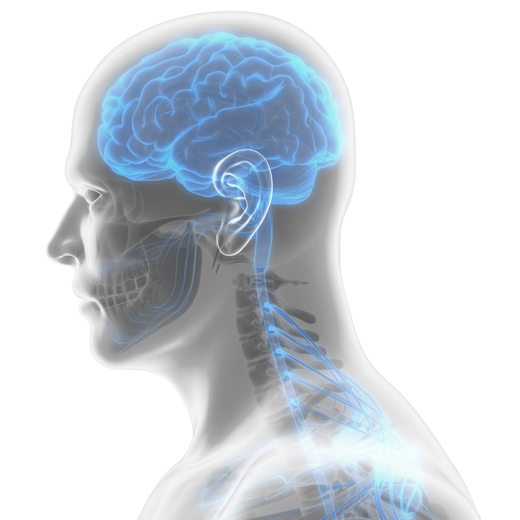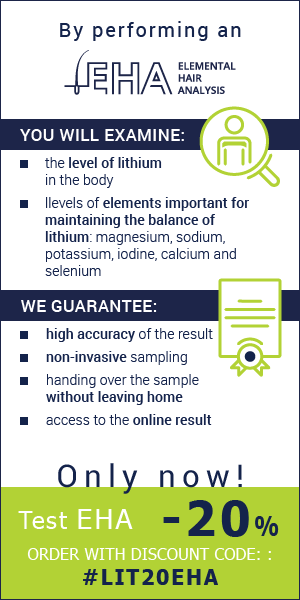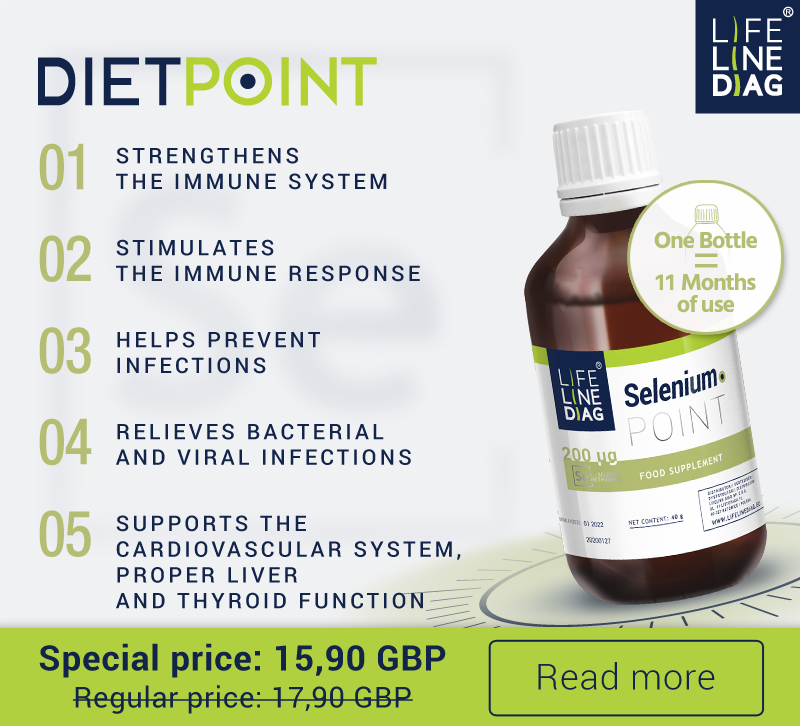 Lithium salts are one of the oldest currently available psychotropic drugs. Numerous studies have confirmed their value in psychopharmacotherapy, especially when it comes to the treatment and prevention of bipolar disorder (bipolar affective disorder – BPAD, also known as bipolar affective disturbances, previously known as manic depression or cyclophrenia, is characterised by depressive episodes, mania/hypomania or mixed episodes).
Lithium salts are one of the oldest currently available psychotropic drugs. Numerous studies have confirmed their value in psychopharmacotherapy, especially when it comes to the treatment and prevention of bipolar disorder (bipolar affective disorder – BPAD, also known as bipolar affective disturbances, previously known as manic depression or cyclophrenia, is characterised by depressive episodes, mania/hypomania or mixed episodes).
The history of the use of lithium in medicine goes all the way back to ancient times. Their intuitive use in treatment dates back to the second century AD, when Galen recommended that patients with mania symptoms drink and bathe in alkaline mineral, which contained lithium. However, lithium didn’t become famous until the beginning of the 19th century. At that time, it was discovered that a solution containing ions of this element dissolves uric acid deposits. Lithium started being used in medicine in the 1940s, as it was supposed that uric acid deposits were responsible for the occurrence of most diseases affecting mankind. So, lithium compounds were used to treat a whole range of conditions, such as epilepsy, headaches, diabetes, kidney and bladder diseases, cancer and insomnia. In the last two decades of the nineteenth century, brothers Carl and Fritz Lange from Denmark used lithium in the treatment and prevention of depression, and in 1871 American William A. Hammond described the use of lithium bromide in the treatment of mania. However, the observed toxicity of lithium compounds resulted in lithium being discontinued as a medication at the beginning of the 20th century.
The real value of lithium salts in psychiatry wasn’t discovered until 1949, when Australian doctor John Cade proved their effectiveness in the treatment of mania. Because of the difficulty in obtaining serum lithium concentrations in the human body that would be effective without signs of toxicity, the US Food and Drug Administration (FDA) registered lithium salts for the treatment of manic episodes only in 1970, and four years later for the prevention of affective disorders. This made the new medication very popular among psychiatrists. However, this popularity dropped significantly in the 1990s with the introduction of antiepileptics and then atypical antipsychotics for the prevention and treatment of bipolar affective disorder (BPAD).
Although the FDA has already registered 10 substances for the treatment of mania and the prevention of BPAD, lithium justifiably still ranks high in most guidelines and treatment algorithms for this disease. Many randomised multicentre trials have demonstrated the efficacy of lithium salts in the prevention of BPAD, as well as their potent anti-manic effects and less-obvious anti-depressant effects. The use of this medication goes beyond these conditions, and also covers bipolar schizoaffective psychosis, cyclothymia, and antidepressant augmentation. Long-term lithium therapy also reduces the overall risk of suicide and suicide attempts. Because of the above reasons, lithium, despite its disadvantages (a narrow therapeutic index, the need to monitor drug concentration, a group of patients who don’t experience the therapeutic effects of the drug), is still an extremely useful psychotropic medication.
However, numerous experiences in the use of lithium in medicine have not resulted in comprehensive knowledge of the mechanisms of its action in the central nervous system, despite the fact that numerous biochemical effects of the use of lithium ions are known, and that some of them likely have therapeutic significance. Therefore, modern researchers are tasked with precisely distinguishing the mechanisms of the therapeutic effects of lithium from those that may underlie the adverse effects and toxicity. (…)
Lithium’s mechanism of action
The first concepts regarding the mechanism of therapeutic action of lithium ions in the central nervous system were based on the chemical structure of this element. Since lithium belongs to the group of alkali metals, it has been suggested that the conductivity of nerve cells can be modified by the effect of lithium on ion transport across the cell membrane, and in particular the inhibition of sodium ion transport into neurons, but only those with abnormal output levels of this electrolyte. It has been proven that in manic and depression episodes in BPAD, intracellular levels of sodium ions are increased, while during remission, they normalise, and lithium returns this abnormal level to normal. This is meant to prevent calcium-dependent activation of secondary messenger systems and the release of dopamine and noradrenaline from synaptic endings. Studies also indicate that in mania and depression (compared with patients in euthymia in bipolar disorder, but not healthy patients), sodium-potassium-ATPase activity in cell membranes is also reduced, and lithium ions exert a regulating effect on the activity of this enzyme. Further studies have shown that restoring normal sodium-potassium-ATPase activity results in a rebalancing of the calcium ion concentration in the cell’s free cytoplasm and its compartments. (…) At present, however, it seems that the most important mechanisms of lithium’s therapeutic action are the effects exerted on intracellular transmission. (…) This interaction can take place based on the competition of lithium ions with magnesium ions for binding sites in intracellular transmission systems. (…)
Neuroprotective effects
The last 15 years have seen the appearance of research results indicating the neuroprotective effect of lithium ions in the central nervous system. This effect is observed in long-term lithium salt treatment, and several likely underlying mechanisms have been discovered so far. (…) Recent studies show that lithium can also act against oxidative stress, i.e. a phenomenon that is a state of imbalance between pro-oxidative processes and anti-oxidative defence, and likely plays a significant role in the pathogenesis and course of bipolar affective disorder. Studies in which lithium salts were used indicate a decrease in plasma lipid peroxidation (thiobarbituric acid reactive substances – TBARs), a decrease in the activity of antioxidative enzymes (glutathione peroxidase, superoxide dismutase, catalase) and, importantly, an increase in total plasma antioxidant capacity. It has also been shown that lithium ions increase gene expression and cell activity of glutathione S-transferase (GST), which is an enzyme that conjugates glutathione – our brain’s main antioxidant – with toxic oxidative stress products, resulting in their neutralisation. (…)
Regulation of gene expression
The therapeutic effects of lithium ions are usually observed several days after the start of treatment, and the symptoms don’t return immediately after stopping the medication. This suggests the possibility that lithium acts at the genetic/molecular level. This is probably due to the lithium ions increasing the binding of activator protein 1 (AP-1), which is one of the most important transcription factors, to its DNA binding site. (…) Another thing that was shown is the influence of lithium ions on the selective expression of specific G-protein subunits and glutathione S-transferase isoenzymes, as well as genes for other proteins changed in the course of bipolar affective disorder. Lithium also regulates cell life expectancy at the DNA level, modulating histone methylation and chromatin structure. (…)
In addition to these, other possible mechanisms for the therapeutic effect of lithium on the CNS, and especially BPAD, are still being considered. Here we can mention extending the length of the biological cycle, the anti-depressant effects of lithium achieved by influencing transmission via neuronal nitric oxide synthase, counteracting apoptosis by increasing the concentration of calcium ions mediated by the activation of PLC and phosphatidylinositol 3-kinases (PI-3K) (this is an immediate and short-term effect of the use of lithium salts that may be important in preventing apoptosis after acute CNS injuries), and lithium ions modifying the function of the neuron skeleton. Research is still being conducted into mechanisms that are already partially known but still require verification or clarification of disputed aspects. (…)
Lithium and the thyroid
A separate issue is the effect of lithium use on thyroid function in patients with bipolar affective disorder, which is the major side effect of long-term lithium therapy. A meta-analysis of the potential toxicity of long-term use of lithium has shown a fivefold increase in the risk of hypothyroidism.
Lithium – mood stabiliser, antidepressant, an ally in Alzheimer’s disease
As mentioned above, lithium clearly reduces the severity of suicidal thoughts and is effective in bipolar affective disorder during periods of mania associated with racing thoughts and agitation. (…) The effects of lithium are suppression of manic symptoms, anti-depressant activity, and long-term stabilisation of mood and drive centres. In the course of mental illnesses such as depression, schizophrenia and neurosis, mental dementia can and very often does occur; this is the result of the death or degeneration of neurons in various areas of the brain, including the hippocampus, similar to Alzheimer’s disease (dementia). There is increasingly more evidence that lithium protects the brain against damage. It also stimulates the increase of new neurons, thus intensifying the neurogenesis process. There are also clinical indications that under lithium administration in patients with bipolar affective disorder, grey matter volume may increase in the brain. (…)
Lithium – where to find it
The richest in lithium are Rosaceae (roses), Caryophyllaceae, Ranunculaceae and Solanaceae. To this day, some people make jam from ground rose petals. Aquatic organisms accumulate more lithium than terrestrial ones, and so fish have very small amounts of lithium. Some amounts can be found in capsicum, tomatoes and potatoes (nightshades), depending on the time of harvest and place of cultivation. However, it’s definitely much better to get this element from mineral water. Water from deep well sources also contains quite a satisfactory dose of lithium; this can’t be said about tap water from pipelines that are being increasingly built in rural areas. Some cities have Oligocene water from very deep wells available – it’s a great option. However, water from a deep or Oligocene well should be treated as a form of prevention rather than therapy.
Lithium – a daily dose
It is generally accepted that the optimal preventive daily intake of lithium should be approximately 1 mg for an adult weighing 70 kg, i.e. approx. 14 micrograms per kilogram of body weight. Therapeutic doses are set individually by doctors.
Lithium – how to use it without overdosing
It should be noted that no side effects occur at doses such as 1 mg per day. Most people won’t see side effects even at much higher amounts. At high doses, side effects such as gastrointestinal disorders, muscle weakness, fatigue, dizziness, drowsiness, diarrhoea, nausea, vomiting, excessive urination and thirst, a metallic taste in the mouth, tremors, seizures, and weight gain may appear. As you continue treatment, these symptoms decrease in severity.
Salt is an antidote to lithium overdose, so you should increase salt supply during lithium therapy. You should also drink a lot to avoid dehydration. Because lithium is able to accumulate, low-dose therapy should be favoured. Fluid loss can be increased by drinking large amounts of caffeine-containing drinks (cola, coffee), intense exercise, or being in elevated temperatures. You should not drink alcohol during the therapy. During lithium therapy, you may need to replenish not only salt but also potassium, as well as rare elements such as rubidium and cesium (you’ll find them in beetroot juice). Iodine and other minerals and compounds may also prove necessary. It all depends on what type of disease you’re dealing with and how the biochemical processes in the body should be steered.
The complications of taking too much lithium are lithium poisoning, goiter, hypothyroidism, increased muscle tension, parkinsonism, psoriasiform changes, arrhythmia, hair loss, and impaired urine concentration ability. When treating acute diseases, do not drive motor vehicles or use machinery. Periodic assessment of thyroid, cardiovascular and kidney function should be performed.
Lithium can also be dissolved in small amounts in water (preferably mineral water) and then drunk. Thanks to the high dilution, we’ll achieve a therapeutic effect with a much lower dose of lithium. Lithium should be taken together with magnesium, and this will increase the effect of magnesium. In unipolar depression and bipolar affective disorder in the withdrawal phase, it can be given together with products that increase dopamine, e.g. golden root. In the manic and schizophrenic phases, categorically avoid dopamine-increasing products. Lithium should be combined with Ginkgo biloba, which improves cerebral circulation. Because it has an inhibitory effect on the thyroid, lithium should be taken in the evening, i.e. when the thyroid is slowing down, a lot of fluids should be taken, you should follow a diet and eat herbs that stimulate the thyroid gland, e.g. horsetail, kelp, and selenium.
Lithium – contraindications
Contraindications apply at high therapeutic doses. For a daily dose of 1 mg, there should be no contraindications. High doses of lithium should not be given in the following conditions and diseases: hypothyroidism, kidney disease, Parkinson’s disease, pregnancy and breast-feeding.
Bibliography:
1. Oliwia Gawlik, Jolanta Rabe-Jabłońska, Mechanizm działania jonów litu w ośrodkowym układzie nerwowym, Psychiatria i Psychologia Kliniczna, 2008, 8 (4), s.211-217.
2. Agnieszka Kraszewska, Maria Abramowicz, Maria Chłopocka-Woźniak, Jerzy Sowiński, Janusz Rybakowski, Wpływ stosowania litu na czynność gruczołu tarczowego u pacjentów z chorobą afektywną dwubegonową, Psychiatria Polska, 2014, 48(3), s. 417-428.
3. https://vrota.pl/2014/09/lit-ukrywana-prawda-o-depresji-i-milionach-ludzkich-tragedii/ (dostęp 20.02.2017).
















